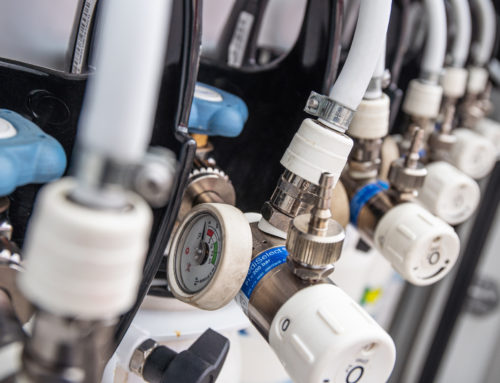The Safe Quality Foods Institute (SQFI) is globally-recognized food safety and quality program. SQF regularly updates certification requirements to ensure quality end-products for consumers. The newest compressed air testing updates are reflected in the SQF Code Edition 9; set to be implemented beginning May 24th, 2021.
Industries Impacted
SQF Edition 9’s codes will require monitoring of the compressed air and gas systems either annually or at a risk-based frequency. Facilities with compressed air systems who are seeking SQF certification will fall into one of the following categories:
- Food Manufacturing
- Pet Food Manufacturing
- Animal Feed Manufacturing
- Animal Product Manufacturing
- Dietary Supplement Manufacturing
- Storage & Distribution
- Manufacturing of Food Packaging
SQF Edition 9 Code Changes – Compressed Air Testing
Module Changes
The most prominent change in the Code related to compressed air monitoring is found in Module 11:
11.5.5.1: Compressed air or other gases (e.g. nitrogen or carbon dioxide) that contact food or food contact surfaces shall be clean and present no risk to food safety.
11.5.5.2: Compressed air systems and systems used to store or dispense other gases that come into contact with food or food contact surfaces shall be maintained and regularly monitored for quality and applicable food safety hazards. The frequency of analysis shall be risk-based and at a minimum annually.
The addition of the sentence “The frequency of analysis shall be risk-based and at a minimum annually,” to the Code clarifies the minimum frequency of monitoring that auditors will look for in future inspections. For some facilities, annual monitoring is not sufficient. Conduct a risk assessment to determine specific monitoring needs. Some manufacturers may determine that quarterly or semi-annual testing provides more accurate and reliable data on their system.
Risk assessments take many factors into account including:
- System age
- Filtration
- Dryers
- Piping distribution
- Material
Appendix Changes
In addition to the change of minimum monitoring frequency, SQF Edition 9 added the following definition of “compressed air monitoring” to its appendix:
A program that includes particles, water, oil, microorganism, and gases in compressed air and other gases. A verification of effectiveness of compressor maintenance and filtration a management facility has in place.
This definition clarifies what a monitoring plan should include while leaving the purity class up to the facility to decide based on their system’s capabilities and facility’s needs.
What To Test Compressed Air For
Edition 9 states that a compressed air monitoring plan should test for the following:
Particles: Both viable and non-viable particles concern manufacturers. Improper or inadequate filtration or system contamination can mean these particles may impact the end-products.
Water: Excess water in a compressed air system can lead to rust, saturate filters, and create a breeding ground for microorganisms.
Oil: Oils can enter a compressed air system from cleaning supplies, maintenance, and vehicle exhaust and can damage the system or contaminate the end-products.
Microorganisms: Contamination from microbes like Listeria or Salmonella should be monitored regularly to reduce the risks they present. Systems with excess water, oil, and particles are at a higher risk of microbial contamination.
To determine purity class, a facility may compare their system risks to published standards such as ISO 8573. Depending on the end-product and how your compressed air system comes in contact with it, purity requirements may vary.
It is important to keep your system’s capabilities in mind when choosing a purity class. Some systems may not be able to achieve the stringent requirements of a higher purity class due to variations in piping material, dryer type, filtration, etc.
SQF Edition 9 will go into effect on May 24th, 2021. This may mean that your facility needs to make important changes to your compressed air monitoring plan to meet certification requirements. With the additional guidance now available in Edition 9, facilities can better determine what to test for, how frequently to test, and which levels are appropriate for them.
For more information on testing compressed air systems to ISO 8573, click here.










